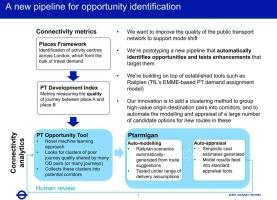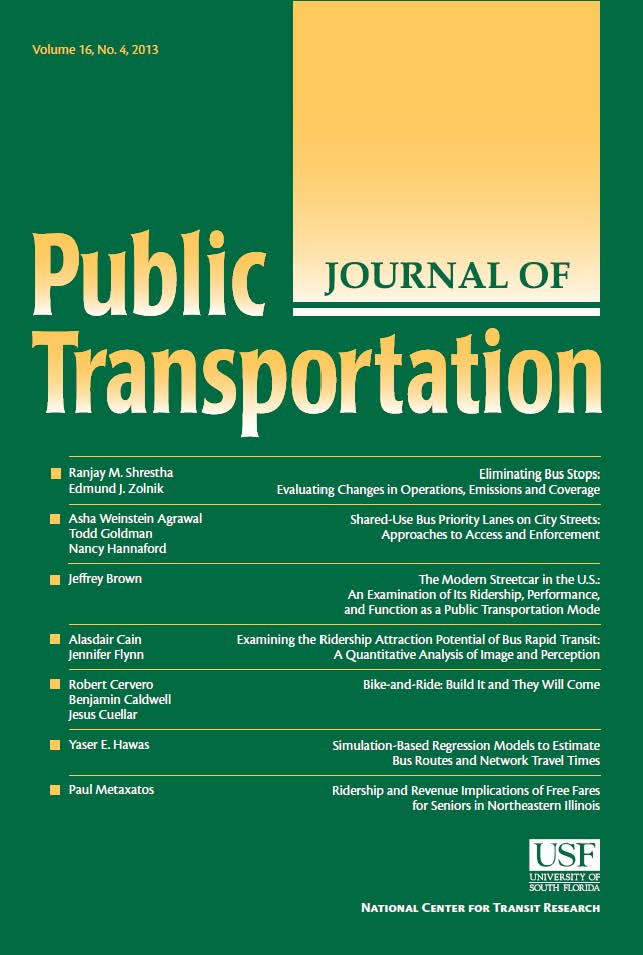规划黄金:通过机器学习和评估自动化识别公共交通干预的机会
IF 2
4区 工程技术
Q3 TRANSPORTATION
引用次数: 0
摘要
改善公共交通连通性对脱碳和经济增长至关重要。目前解决交通连接问题的交通规划方法依赖于反复试验的方法来识别问题并提出解决方案,这受到规划者知识不全和大量可用出行数据的限制。我们引入了一种机器辅助方法,从起点-目的地数据中识别连接性增强的机会,并生成优先的干预方案。使用覆盖约1200个活动中心的大伦敦起点-目的地矩阵,我们的方法应用轨迹聚类来识别公共交通质量差的潜在高需求走廊。我们的原型在这些走廊内自动生成多种公共交通方案选项(本地公交、快速公交、地铁)以及大致的运营成本。使用加速分配模型对这些选项进行批量测试,优化模式选择、频率和路线生成,并根据效益-成本比给出结果。这种方法现在正被用来补充人类规划师的知识,以开发伦敦新的快速公交服务。本文章由计算机程序翻译,如有差异,请以英文原文为准。

Planning for gold: identifying opportunities for public transport interventions through machine learning and appraisal automation
Improving public transport connectivity is crucial for decarbonisation and economic growth. Current transport planning approaches to addressing connectivity problems rely on trial-and-error approaches to identify problems and generate options, limited by planners' incomplete knowledge and the overwhelming volume of available travel data.
We introduce a machine-assisted approach to identify opportunities for connectivity enhancements from origin-destination data and generate prioritised intervention options. Using an origin-destination matrix for Greater London covering approximately 1200 activity centres, our method applies trajectory clustering to identify potential high-demand corridors with poor public transport quality.
Our prototype automatically generates multiple public transport scheme options (local bus, express bus, metro) within these corridors along with approximate operating costs. These options are batch-tested using accelerated assignment modelling that optimises mode choice, frequency, and route generation, and the results are given ordered according to benefit-cost ratios.
This approach is now being used to supplement human planners’ knowledge in the development of new express bus services in London.
求助全文
通过发布文献求助,成功后即可免费获取论文全文。
去求助
来源期刊

Journal of Public Transportation
TRANSPORTATION-
CiteScore
6.40
自引率
0.00%
发文量
29
审稿时长
26 days
期刊介绍:
The Journal of Public Transportation, affiliated with the Center for Urban Transportation Research, is an international peer-reviewed open access journal focused on various forms of public transportation. It publishes original research from diverse academic disciplines, including engineering, economics, planning, and policy, emphasizing innovative solutions to transportation challenges. Content covers mobility services available to the general public, such as line-based services and shared fleets, offering insights beneficial to passengers, agencies, service providers, and communities.
 求助内容:
求助内容: 应助结果提醒方式:
应助结果提醒方式:


